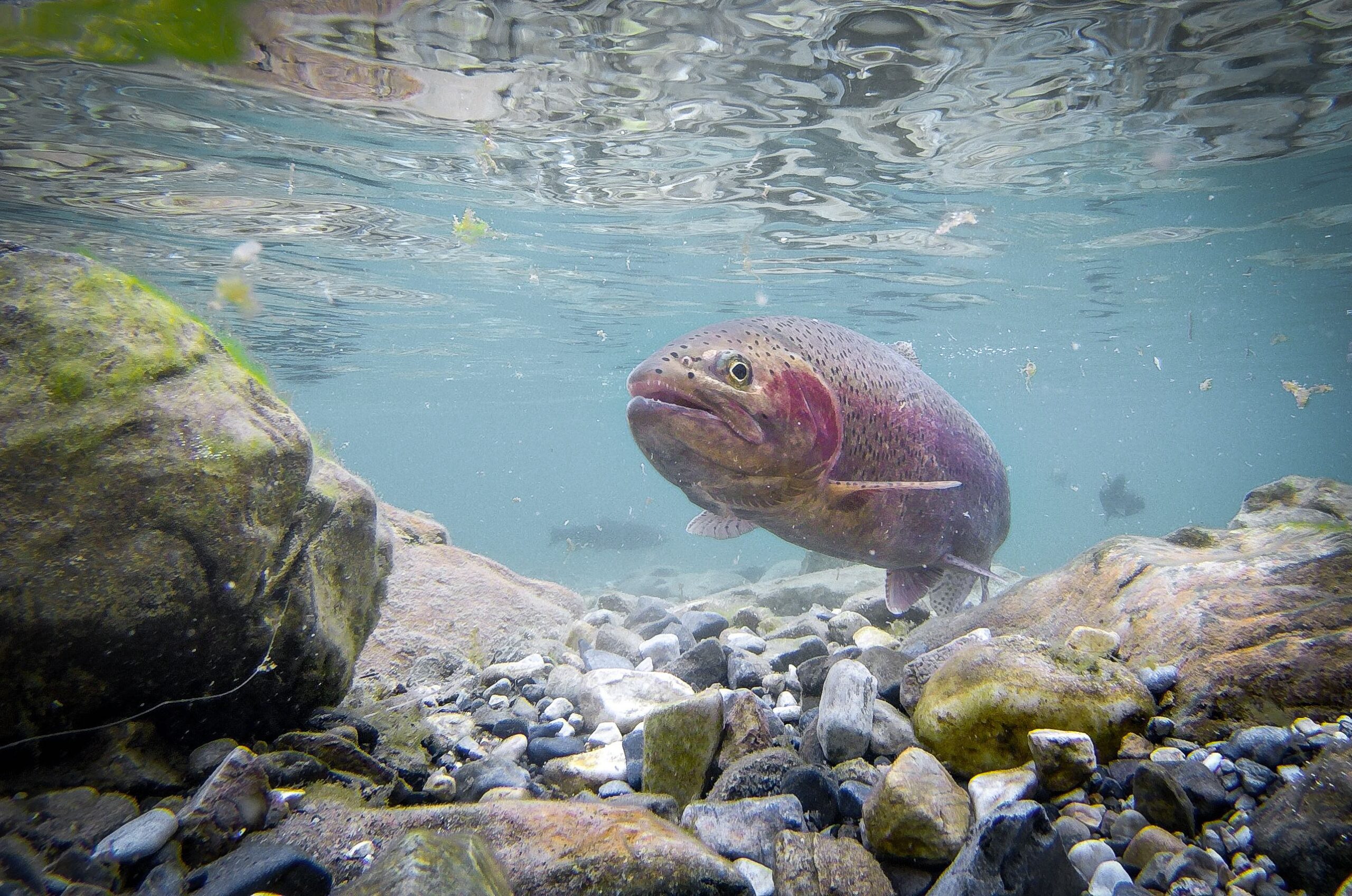
Below we provide updates on the latest developments in the ongoing Lopez Dam litigation and answers to some common questions following recent statements to the media from San Luis Obispo County regarding what this case truly means for our region’s water security and wildlife protections.
What is this case all about?
For decades, San Luis Obispo County has operated Lopez Dam in violation of the Endangered Species Act, harming steelhead trout and degrading Arroyo Grande Creek. Despite nearly 30 years of warnings, the County has failed to secure a required federal permit from wildlife agencies to legally operate the dam. In response, ForestWatch and partners took legal action to compel the county to finalize that permit and ensure long-overdue protections for steelhead. In November, in response to overwhelming factual evidence, a federal judge issued a preliminary injunction requiring the County to implement interim water releases and habitat improvements while a final decision is reached.
Despite the ruling’s temporary nature, the County has chosen to appeal rather than collaborate on a long-term solution. ForestWatch and our partners remain committed to working toward a balanced outcome that protects both the region’s water security and the survival of imperiled wildlife.
What does the preliminary injunction do?
The preliminary injunction is a court order requiring San Luis Obispo County to implement interim measures to protect threatened steelhead trout while the lawsuit is ongoing. It includes requirements for modest, specific water releases from Lopez Dam to ensure steelhead migration, along with habitat monitoring and other actions aimed at preventing further harm to the species.
This ruling does not permanently determine how the dam must be operated—it simply ensures improvements to habitat conditions for endangered species in the short term while long-term solutions are developed.
Why is the preliminary injunction notable?
Winning a preliminary injunction is significant because courts require strong, compelling legal and factual evidence before granting one. To succeed, we had to demonstrate that irreparable harm to steelhead would occur without immediate intervention and that our legal claims were likely to succeed at trial. This ruling affirms that the County’s operations likely violate the Endangered Species Act by harming steelhead, and it underscores the urgency of protecting steelhead while a final resolution is reached.
What science and data did the court rely on to set temporary water releases?
The ruling set temporary water release requirements based on the County’s own consultants’ analysis, which determined the flows necessary to support steelhead migration and habitat. The court relied on scientific data and expert recommendations to ensure compliance with the Endangered Species Act while balancing water resource considerations.
Does the preliminary injunction threaten the local water supply?
No. The preliminary injunction is temporary and ensures threatened steelhead receive adequate flows while a final solution is developed. Lopez Reservoir is near full capacity, making the county’s claim that the ruling threatens water supply during the short time it is in effect is false. The court-ordered flows are proportionally small compared to other existing water demands, including municipal, agricultural, and discretionary releases. The County’s assertion that these requirements are permanent suggests it in fact has no real intention of finalizing a Habitat Conservation Plan with wildlife agencies, further affirming our original motivation to legally intervene.
Does the ruling impact the fire department’s ability to respond to wildfire?
No, these wild assertions play off of the current political climate to spread fear and misinformation. The ruling does not impact the fire department’s ability to respond to wildfires. Lopez Reservoir is near full capacity, and fire agencies have multiple water sources available for firefighting. The county’s claim that the court-ordered releases jeopardize fire suppression is misleading and ill-informed. Consider that the largest helicopter fire buckets hold about 2,600 gallons. At 5% of its capacity, Lopez Lake would provide enough water for over 300,000 drops of water from helicopters. Again, the required flow adjustments are proportionally small, temporary, and do not diminish emergency response capabilities.
Who is really using the most water, and why is wildlife being blamed?
Before pointing fingers at wildlife protections, the County should take a closer look at where the bulk of the water from Lopez Reservoir is actually going. According to publicly available data housed by the State Water Resources Control Board, in 2021 and 2022, a single private agricultural entity diverted more water from Arroyo Grande Creek than the combined municipal demand of all five cities that rely on Lopez Reservoir!Yet, the county claims that modest, science-based flow releases for steelhead are the real problem. The real question isn’t whether we can balance wildlife needs—it’s why a small number of private interests are receiving the lion’s share of water while the county fights protections that benefit the entire ecosystem and community. Instead of attacking steelhead protections, we should be asking whether our water is being equitably managed for everyone.
What solutions is the county ignoring while pointing fingers?
The County currently follows its Interim Downstream Release Plan which includes a Low Reservoir Response Plan that only kicks in after Lopez Reservoir is already 60% depleted, instead of taking proactive steps to manage water sustainably before shortages occur. There is no discussion of how conservation efforts could reduce demand or how investments in groundwater recharge and other water supply augmentation projects could help secure long-term resilience. Instead of working toward forward-thinking solutions, the county is using steelhead protection as a scapegoat while ignoring the bigger issue of outdated, reactionary water management policies that put the region at greater risk. If the County truly cared about water security, it would be focusing on smart conservation, efficiency, and diversified water solutions—not just fighting environmental protections.
What’s next?
ForestWatch and our partners remain committed to working with the County to develop a long-term solution that balances water security, agricultural needs, and the survival of threatened steelhead. Unfortunately, the County has yet to step forward with any constructive proposals or meaningful efforts to resolve the issue. Instead, its decision to appeal threatens to derail progress entirely—at great expense to taxpayers. We continue to hope that stronger leadership will emerge to change the current course, abandon political posturing, and focus on real solutions—ones that secure a sustainable water future for both people and wildlife







Comments are closed.